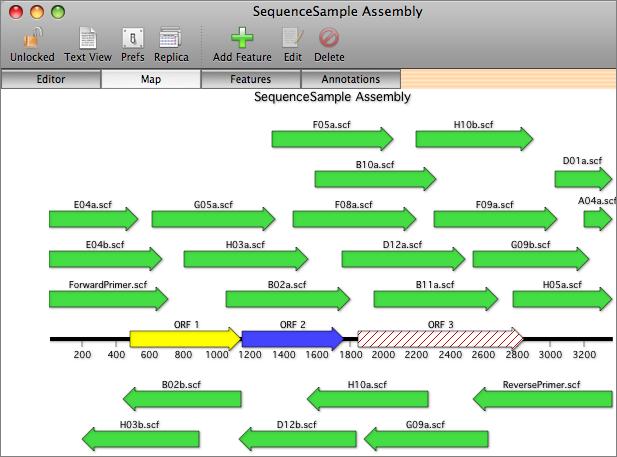

- #Macvector protein sequence install
- #Macvector protein sequence software
- #Macvector protein sequence series
Homologs of most of these yeast proteins were identified by proteomic analysis of proteins present in purified human nucleoli (Andersen et al. In addition, a number of proteins not yet found in pre-ribosomal particles are implicated in biogenesis of 60S ribosomal subunits, based on their mutant phenotypes (Kressler et al. More than 140 nonribosomal proteins have been found in these pre-ribosomal complexes, including at least 60 proteins associated with the 66S precursor particles. These complexes include an active RNA polymerase I complex associated with rRNA processing and modification factors, 90S pre-ribosomes, a large U3 snoRNP complex, and several different 66S particles representing different stages of 60S subunit formation (Fath et al. Recent technical advances in molecular biology and proteomics have enabled researchers to purify pre-ribosomal particles from yeast and to identify their protein as well as RNA constituents. 5S rRNA, transcribed separately from 35S pre-rRNA by RNA polymerase III, is thought first to associate with 66S pre-ribosomes containing 27SB pre-rRNA (Dechampesme et al. Thus it became evident that there must be at least four different 66S pre-ribosomes containing these different pre-rRNA precursors. These studies revealed the existence of 27SA 2, 27SA 3, 27SB S, 27SB L, 25.5S, and 7S precursors to mature 25S and 5.8S rRNAs (Fig. cerevisiae, led to the discovery of a more complex pathway for processing of 27S pre-rRNA and the maturation of 66S pre-ribosomes (for review, see Kressler et al. Subsequent analysis of eukaryotic pre-rRNA processing, particularly in the genetically tractable yeast S. The 43S precursor particles are rapidly exported to the cytoplasm, where final steps of 40S subunit maturation occur, including production of mature 18S rRNA from 20S pre-rRNA (Udem and Warner 1973). Following cleavage of the 35S pre-rRNA, 90S particles are converted into 66S and 43S assembly intermediates containing 27S and 20S pre-rRNAs, respectively. The 35S primary rRNA transcript is present in a 90S pre-ribosome. These investigations established an ordered pathway of pre-ribosome formation. 1975 Trapman and Planta 1976 for review, see Hadjiolov 1985).
#Macvector protein sequence series
A series of pioneering experiments established that nascent pre-rRNA assembles with nonribosomal proteins and a subset of ribosomal proteins to form large ribosomal ribonucleoprotein particles (rRNPs), which are converted to mature ribosomal subunits (Warner and Soeiro 1967 Kumar and Warner 1972 Prestayko et al. proteins with the rRNA, structural rearrangements and nu- cleolytic processing of pre-rRNA, release of pre-ribosomal particles from the nucleolus to the nucleoplasm, export to the cytoplasm, and late cytoplasmic steps in maturation of functional ribosomal subunits (Rau ́ 2003 Tsochner and Hurt 2003).
#Macvector protein sequence install
Try MacVector For 21 Days! The best way to check out MacVector is to download and install a FULLY FUNCTIONAL 21 day trial version. Learn excel 2016 essential skills for mac. You can also run NGS reference alignments using the popular Bowtie algorithm. The trial version includes the module that lets you run de novo assemblies of both traditional Sanger ('ABI') sequences and fastq/fasta formatted Next Generation Sequencing (NGS) data using either the phrap, Velvet or SPAdes assembly algorithms. If you are engaged in molecular biology research and own a Macintosh computer - you need. MacVector is used by researchers in every major worldwide institution and has been cited in thousands of publications. MacVector is simple enough for undergraduate molecular biology students to use, but powerful enough to satisfy the demands of the most experienced principle investigators. You can use MacVector to create great looking plasmid maps, construct vectors and clones with a few simple clicks, design primers, align proteins, assemble sequences or even reconstruct phylogenetic relationships. MacVector 16.0 MacVector is a sequence analysis application for Macintosh computers that lets you manipulate, document and analyze DNA and protein sequences. Open reading frames (ORFs) encoding more than 50 amino acids (aa) with minimal overlap were accepted as putative genes otherwise, the largest ORF was selected. DNA sequence data were analyzed using DNAStar LASERGENE programs, version 4.06 or 5.05, and MacVector sequence analysis software, version 4.1.4. MacVector is designed to be used on Macintosh computers, and has a well-deserved reputation for being swift, powerful, and amazingly easy to use.
#Macvector protein sequence software
One such software package is called MacVector, the latest release of which provides the molecular biologist with a wide variety of tools for analyzing nucleic acid and protein sequences.


 0 kommentar(er)
0 kommentar(er)
